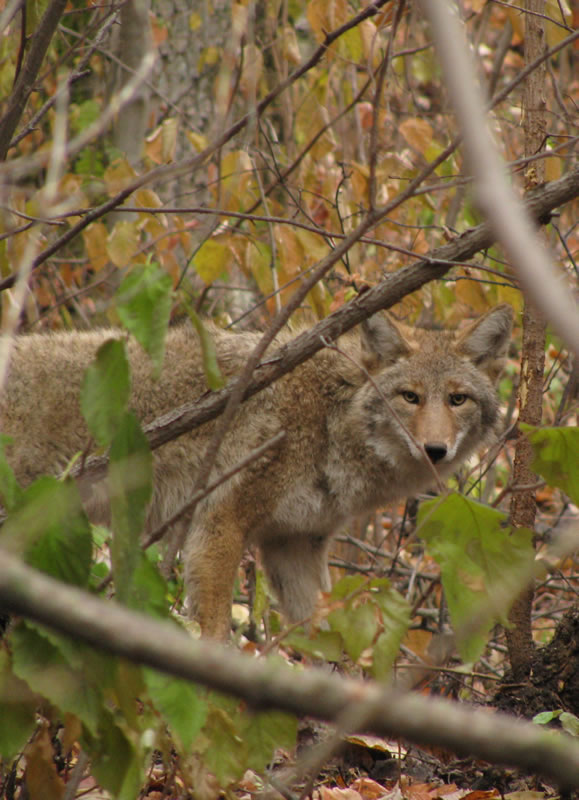
Are coyotes dangerous?
Like almost all animals, both wild and domestic, coyotes do have the potential to be dangerous and there have been several news articles in the last few years highlighting this. However, in most of these cases, the coyotes involved in the incident had been directly or indirectly fed by humans and had lost their fear of us. By helping to maintain coyote's natural fear of people and avoiding habituation, we can minimize the risk that coyotes can pose.
What should I do if I see a coyote?
The vast majority of negative human-coyote interactions occur because the coyotes are habituated to humans. In order to avoid this, we need to ensure that coyotes keep their fear of humans. The easiest way to accomplish this is to make yourself as intimidating as possible when you encounter a coyote. This takes an active will, because most of us would rather have a quiet personal experience when we chance upon an elusive wild animal. But in order to prevent the trajectory of habituation, food conditioning, and conflict, then it's important to avoid letting the coyote feel comfortable and unthreatened around you. Make yourself seem bigger than you are by raising your hands above your head and shout at the coyote. NEVER feed a coyote or try to touch it, and NEVER run away from a coyote, because their chase instinct makes them more likely to chase after something that runs from it. See our page on avoiding conflict for further instructions on how to prevent habituation and how to behave in an coyote encounter.

Where do coyotes live?
Coyotes are found in major cities across North America, including Los Angeles, New York and Chicago. However, coyotes appear to prefer to live in more "natural areas" inside of cities, although they are by no means limited to them.
What benefits do coyotes provide?
Urban coyotes play an important role in pest management. They significantly reduce urban rodent populations, which comprise the majority of their diet in Edmonton, and can also reduce rabbit, feral cat, and duck population numbers.
Why don't we just remove coyotes from the city?
Lethal management of coyotes has been widespread throughout North America. However, this approach to managing the animals has many problems. First, it doesn't work very well. Persecuted coyote populations actually have higher reproductive rates and more animals are always available to replace those that are removed. Taking some out just allows for more to come in. Second, the public is increasingly unsupportive of lethal management and societies have been formed to ban it in some cities (E.g., Vancouver, Toronto). Relocation programs are ineffectual for most wildlife, and prohibitively costly for elusive, highly mobile animals like coyotes. Instead, it's much easier (and cheaper) to coexist with coyotes and to use lethal management as a last resort only when people are endangered.
How do other cities manage urban coyotes?
Coyotes are now found throughout North America, which means that many other cities are also experiencing their presence and working towards coexistence. This also means that city inhabitants all over the continent may have the same queries and concerns as you do! Google "urban coyotes" to find information, resources, and public views on urban coyotes from various cities throughout North America.










